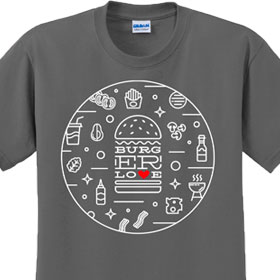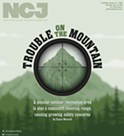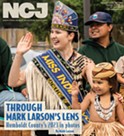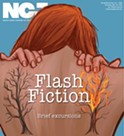[
{
"name": "Top Stories Video Pair",
"insertPoint": "7",
"component": "17087298",
"parentWrapperClass": "fdn-ads-inline-content-block",
"requiredCountToDisplay": "1"
}
]
On a visit to Arizona some years ago, the sculptural beauty of the dry landscape was a huge highlight of my trip. Given that, I was taken aback by the sheer number of front yards that featured lush plantings of ferns, fuchsias and lawn. They stood in such stark contrast to the sweeping vistas of ocotillo, saguaros and crushed local rock, as though the inhabitants of each mini oasis were living in some sad alternate reality, denying the incredible beauty of the place they chose to make their home.
Here in Humboldt, our special brand of gardening insanity concerns the redwoods. In particular, planting sun-loving cottage garden staples like roses and daylilies in the root-ridden, acidic shade underneath these majestic giants. Never mind the size difference and aesthetic contrast, which makes these otherwise attractive flowers look as appropriate as a dimestore necklace on the Mona Lisa. From a purely practical standpoint, the dense shade, root competition and acidic soil mean these plants will always grow leggy or droopy when planted close to a redwood's base. Instead of struggling along trying to put traditional garden flowers under these magnificent trees, why not design a planting worthy of them by celebrating what's special about the natural world here in Humboldt? Here's how:
Give the trunk some space. First, stand outside and admire the craggy bark and soaring trunks of your redwoods. Is this something that you need to hide? The area right at the base of the tree is going to be so full of thick woody roots that you will find it hard to hack a hole in which to plant, and your redwood really won't appreciate having you come out and dump water next to its trunk every other day. So consider leaving at least 6 feet between the trunk and any plantings you put in. If you must plant, establish low-growing redwood sorrel or native ferns, both of which are used to coexisting closely with the trees.
Don't make your plants fly solo. While the impulse of most new gardeners is to plant as many varieties as possible for greater interest, a "one of this and one of that" planting aesthetic feels busy and ineffective when set against the scale of these grand trees. Instead, plant perennials in drifts of at least five, more if there's room, and repeat groupings of each plant for a sense of continuity. As your eyes move over the foliage, the flowing tapestry of colors and textures should lead your eye to the stars of the setting — the towering height and rich reddish brown bark of your redwoods.
Choose acid-loving plants. Redwoods drop some leaves throughout the entire year, with a particularly large drop in autumn and again after each winter storm, and as that duff breaks down it lowers the pH of the soil, creating the mulchy, acidic environment redwoods need to thrive. Luckily, shade-loving ornamental grasses, ferns, woodland perennials, and redwood forest natives also prefer acidic soil, so you have a lovely variety of plants that will appreciate the setting. There's no need to fight nature by planting Mediterranean herbs, traditional cottage garden plants like boxwood and roses or vegetables, which can't access nutrients effectively in soil with a low pH.
Give them a drink. Most plants have as much going on underneath the soil as they do above it, and redwoods are no exception. The area underneath a redwood is full of thirsty feeder roots which suck up every bit of excess moisture they can to ensure the health of the tree. So you can imagine the success rate of even the hardiest native plants when they are planted from a 4 inch or 1 gallon pot and left to fend for themselves. Even if the rest of your garden is a no-water zone, consider installing a simple drip irrigation system for any planting bed in the shade of a redwood tree, and hold all of that water in by amending with compost and topdressing with a thick layer of wood chip mulch. You'll need to water plants for the first three summers to help them fill in and develop a deep root system, and then give them a periodic summer drink once mature.
Celebrate our regional beauty. The redwoods are one of the things that make living here feel so magical, so just as Arizonans should embrace their cacti and rock, we shouldn't try to remake the redwoods in the image of some other place. If you're unsure as to what will look good, it's hard to go wrong with redwood natives like huckleberry, deer and sword ferns, salal, and Pacific bleeding heart. Not only do they perfectly evoke a sense of place, but our local plants have also developed relationships with the birds and wildlife who live here, bringing an added layer of beauty and life to your planting.
My favorite plants for right underneath redwoods:
California wax myrtle (Myrica californica) is an evergreen screening shrub with tremendous wildlife value.
Vine maple (Acer circinatum) looks like a small version of a Japanese maple with spring-green foliage. 'Pacific Fire' has vivid red stems in winter like a coral bark Japanese maple.
Pacific rhododendron (Rhododendron macrophyllum) is our native species which grows around 8 feet tall in home gardens and has pinky lilac flowers in early spring.
Flowering currant (Ribes sanguineum cvs.) attracts hummingbirds as early as January when its pink, white, or reddish blooms emerge. Later in the season, other birds eat the currants.
Thimbleberry and salmonberry (Rubus spp.) are great toward the backdrop of a planting and provide opportunities for snacking while gardening.
Evergreen huckleberry (Vaccinium ovatum) has white bell-shaped blooms in spring and feeds birds later in the season with its profuse crop of tart but edible black berries.
'Marissa', 'Hoppy', and 'Dora Amateis' Rhododendrons (Rhododendron cvs.) are all sturdy dwarf varieties which bloom so heavily that even in the shade they put on a good show.
Sword fern (Polystichum munitum) is the robust native fern you are used to seeing most commonly in the forest and looks beautiful in large groupings under redwoods.
Deer fern (Blechnum spicant) is a smaller native fern with wiry black stems which gives it a modern look (combine it with 'Black Diamond' hellebore for a great winter show).
Five finger fern (Adiantum aleuticum) almost looks too delicate to plant outdoors, but is another native with soft, feathery foliage that contrasts well with the more architectural quality of sword or deer ferns.
Hellebores (in particular Helleborus foetidus, but also H. orientalis) the lime green flowers of H. foetidus brighten up the shade for a long season, while winter-blooming H. orientalis has a variety of flower colors to choose from, including yellow, black, pink, white and speckled versions.
Japanese forest grass (Hakonechloa macra 'Aureola') has elegant weeping foliage which brightens a hillside with its wispy golden strands.
Pacific bleeding heart (Dicentra formosa) has a delicate appearance but forms vigorous spreading clumps of pink flowers held above feathery foliage.
Wild ginger (Asarum caudatum), with its odd brown orchid-like blooms and shiny dark green leaves, is a dignified groundcover whose finer qualities become more apparent the longer you grow it.
Douglas iris (Iris douglasii) prefers a little more sunshine but provides lovely purple blooms in spring.
Black mondo grass (Ophiopogon planiscapus 'Nigrescens') slowly spreads and colonizes small areas with its low mounds of strappy black foliage.
Redwood sorrel (Oxalis oregana) has big clover shaped leaves with purple undersides and whitish pink flowers in spring, and can easily cover the ground in areas where nothing else will grow.
For a February garden to-do list, visit www.northcoastjournal.com/GardenTodo.
Genevieve Schmidt is a landscape designer and owns a fine landscape maintenance company in Arcata. Visit her on the web at www.GenevieveSchmidtDesign.com.
Comments (3)
Showing 1-3 of 3
more from the author
-
Gardening Grab Bag
What's new and cool in the gardening world
- Jun 2, 2016
-
Tackling Weeds Organically
- May 5, 2016
-
The Illusion of Water in the Low-Water Garden
- Apr 7, 2016
- More »

































